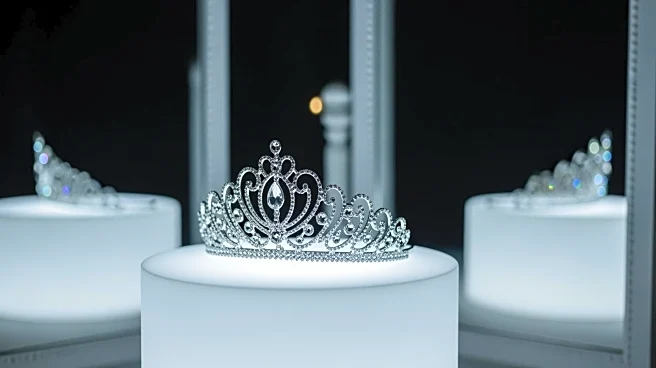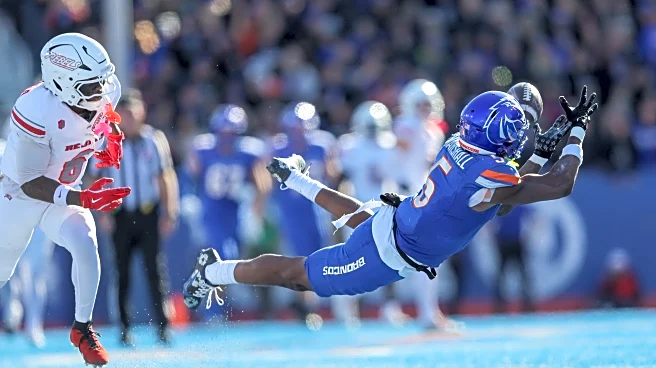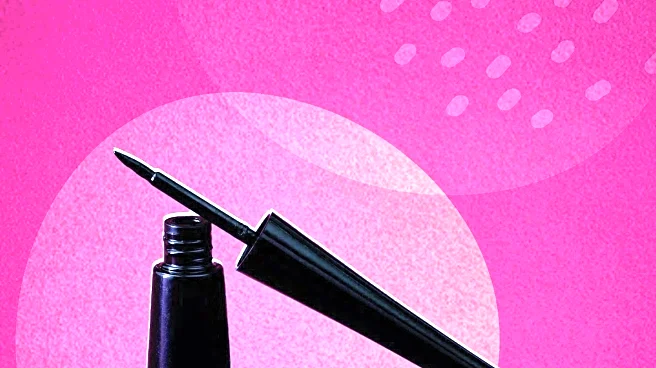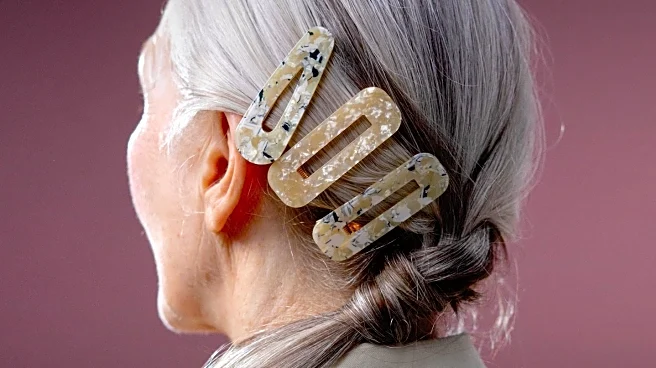What's Happening?
Mary Sickler, the current Miss Nevada USA, made a bold statement during the Miss USA preliminaries by removing her wig on stage. Diagnosed with alopecia universalis in December 2024, Sickler has been open
about her condition, which led to complete hair loss. During the pageant held in Reno, Nevada, she opted for a bejeweled head covering instead of a wig, showcasing her confidence and embracing her natural beauty. Sickler's decision to reveal her alopecia publicly came after winning the Nevada state title, marking her as the first woman with a public alopecia diagnosis to compete at Miss USA. Her actions have been seen as a demonstration of strength and self-acceptance, challenging traditional beauty standards in the pageant industry.
Why It's Important?
Sickler's decision to compete without a wig highlights the evolving standards of beauty and inclusivity within the pageant industry. By embracing her alopecia, she challenges societal norms and inspires others facing similar conditions to accept and celebrate their uniqueness. This move could influence the pageant community to become more inclusive and supportive of contestants with diverse backgrounds and conditions. Sickler's actions may also encourage broader discussions about beauty standards and the importance of self-acceptance, potentially leading to more representation and diversity in media and fashion.
What's Next?
The Miss USA final round is scheduled for October 24, where Sickler will continue to compete for the crown. Her participation may prompt further conversations about inclusivity in pageants and inspire other contestants to embrace their unique attributes. As Sickler continues her journey, she may become a role model for individuals with alopecia and other conditions, advocating for greater acceptance and understanding within the beauty industry.
Beyond the Headlines
Sickler's story underscores the ethical considerations in the beauty industry regarding representation and inclusivity. Her decision to reveal her alopecia challenges the traditional norms and could lead to long-term shifts in how beauty is perceived and celebrated. This development may also encourage pageant organizations to reevaluate their criteria and support contestants in showcasing their authentic selves.












